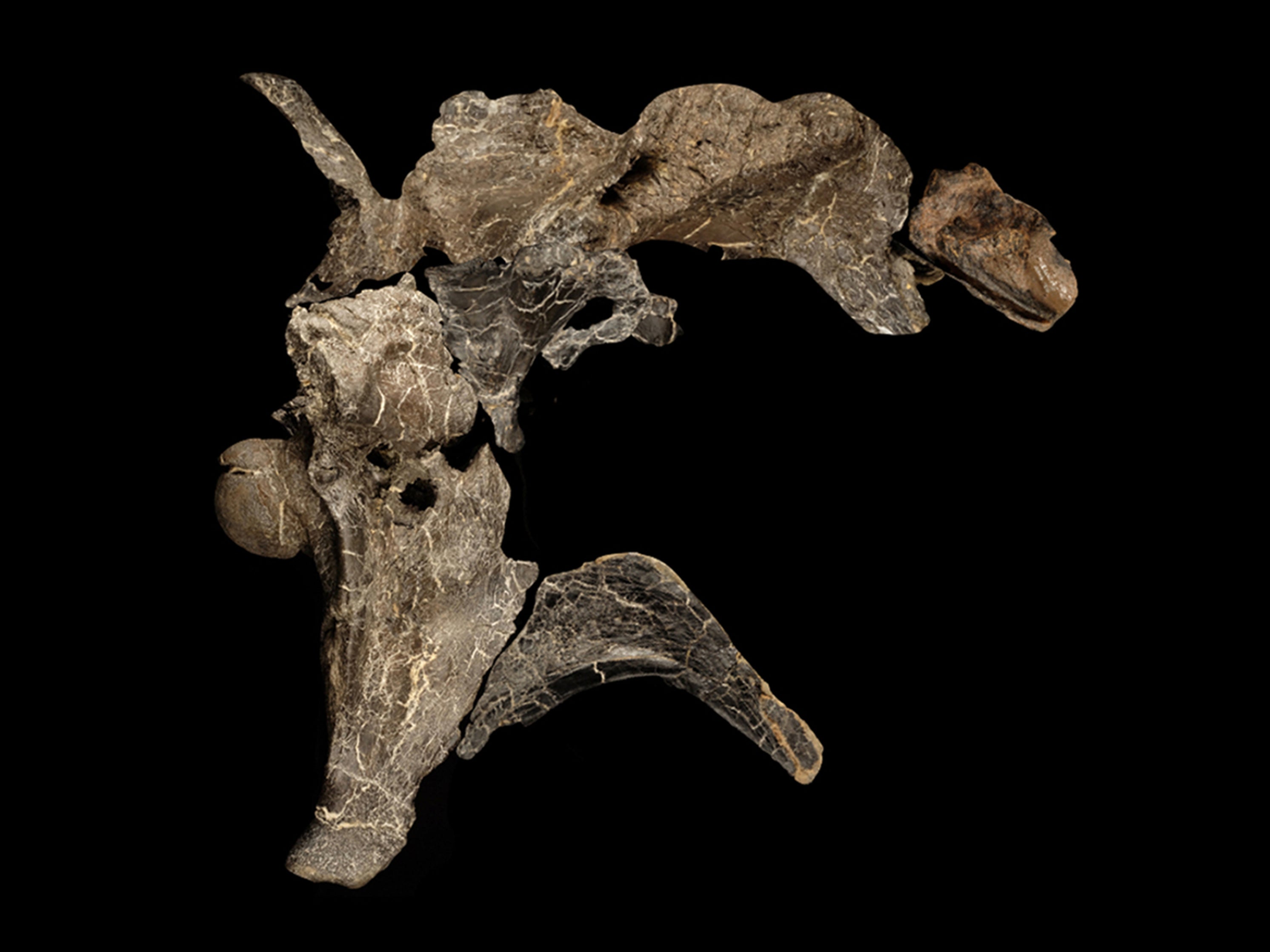Two new killer dinosaurs unearthed on Isle of Wight
They’re both as big as a school bus

Your support helps us to tell the story
From reproductive rights to climate change to Big Tech, The Independent is on the ground when the story is developing. Whether it's investigating the financials of Elon Musk's pro-Trump PAC or producing our latest documentary, 'The A Word', which shines a light on the American women fighting for reproductive rights, we know how important it is to parse out the facts from the messaging.
At such a critical moment in US history, we need reporters on the ground. Your donation allows us to keep sending journalists to speak to both sides of the story.
The Independent is trusted by Americans across the entire political spectrum. And unlike many other quality news outlets, we choose not to lock Americans out of our reporting and analysis with paywalls. We believe quality journalism should be available to everyone, paid for by those who can afford it.
Your support makes all the difference.Two new killer dinosaurs – each as big as a school bus – have been unearthed on the Isle of Wight.
The terrifying beasts had bizarre “crocodile-like skulls” that enabled them to hunt on land – and in the water.
They had razor-sharp teeth and claws – and a whip-like tail. Bone crushing jaws would have snapped prey in half.
Both species reached 30 feet long, over 10 feet tall and weighed about five tons.
They are closely related to the giant Spinosaurus – the largest terrestrial meat eater that ever lived.
One has been named Ceratosuchops inferodios – which translates as “horned crocodile-faced hell heron.”
Its brow was adorned with a series of low horns and bumps – and it stalked like today’s wading bird.

Herons famously catch aquatic animals around the margins of waterways. But their diet is far more flexible than generally appreciated.
They can be found in wetlands throughout the world searching for fish, crabs, frogs, small mammals – and even young birds.
The second was named Riparovenator milnerae meaning “Milner’s riverbank hunter” – after a revered British palaeontologist.

They belonged to a group of carnivores called spinosaurids. The Isle of Wight’s position at the time was roughly where Gibraltar is now.
It has been dubbed ‘Dinosaur Island’. More dinosaur bones have been found there than anywhere else in Europe.
The haul of bones was discovered on the beach near Brighstone Bay on the southwest coast over a period of several years.
Keen-eyed fossil collectors initially found parts of two skulls. A crew from Dinosaur Isle Museum in Sandown recovered a large portion of a tail.
In all, over 50 bones have been dug out of rocks laid down over 125 million years ago during the Early Cretaceous.
The only spinosaurid skeleton previously unearthed in the UK belonged to Baryonyx – discovered in 1983 in a quarry in Surrey.
Most other finds since have been restricted to isolated teeth and single bones.
Lead author Chris Barker, a PhD student at Southampton University, said: “We found the skulls to differ not only from Baryonyx – but also one another.
“It suggests the UK housed a greater diversity of spinosaurids than previously thought.”
The study in Scientific Reports found the skulls alone measured 3ft 3in in length.
Co-author Dr Darren Naish, an expert in British theropod dinosaurs at Southampton, said: “We’ve known for a couple of decades now that Baryonyx-like dinosaurs awaited discovery on the Isle of Wight.
“But finding the remains of two such animals in close succession was a huge surprise.”
Analysis also suggests spinosaurids evolved in Europe – and then dispersed into Asia, Africa and South America.
The most norrious was Spinosaurus or ‘spined reptile’ which was 50 feet long with a ‘sail’ on its back – created by tall vertebral spines.
Co-author Dr David Hone, of Queen Mary University of London, said: “It might sound odd to have two similar and closely related carnivores in an ecosystem.
“But this is actually very common for both dinosaurs and numerous living ecosystems.”
The Early Cretaceous floodplain environment was bathed in a Mediterranean-like climate.
Amateur fossil collector Brian Foster, from Yorkshire, said: “This is the rarest and most exciting find I’ve made in over 30 years.”
Whilst generally balmy, forest fires occasionally ravaged the landscape – the remains of burnt wood can be seen throughout the cliffs today.
Fellow collector Jeremy Lockwood, who lives on the Isle of Wight and discovered several bones, said: “We realised after the two snouts were found this would be something rare and unusual.
“Then it just got more and more amazing as several collectors found and donated other parts of this enormous jigsaw to the museum.”
A large river and other bodies of water attracted dinosaurs and housed various fish, sharks and crocodiles.
The habitat provided the spinosaurids with plenty of hunting opportunities.
Project supervisor Dr Neil Gostling, also from Southampton, said: “This work has brought together universities, Dinosaur Isle Museum and the public to reveal these amazing dinosaurs and the incredibly diverse ecology of the south coast of England 125 million years ago.”
It also cements the Isle of Wight’s status as one of the top locations for dinosaur remains.
The fossils are to go on display at Dinosaur Isle Museum.
Curator Dr Martin Munt congratulated the collectors and scientists for the “amazing finds.”
Dr Angela Milner, after whom Riparovenator is named, recently passed away.
She had previously studied and named Baryonyx – substantially improving our understanding of the spinosaurids.
Join our commenting forum
Join thought-provoking conversations, follow other Independent readers and see their replies
Comments